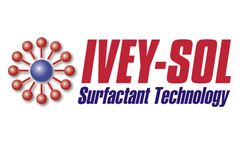produced water oil Articles
-
GWT Case Study - Produced Water - Oil/Gas Industry
GWT Case Study - Produced Water Treatment/Reuse - Oil/Gas Industry Challenge A large oil processing company wanted to reuse their produced water from several oil wells applications. The water contained hydrocarbons, sulfate, TSS, BOD/COD, dissolved salts and high levels of iron and manganese at nearly 65-90 mg/l combined. Solution Genesis Water Technologies provided consulting and ...
-
Produced Water Colorado Oil Patch
Demonstrating the treatability of Integrated Engineers flocculating agents in the treatment of Colorado Oil Patch Produced waste water. Oily Wastewater Treatment Jar Test Colorado Oil Patch This sample is representative of the produced water from the Colorado oil patch region. The sample contains free and emulsified oil, dirt, and water. The water is very saline (high in dissolved solids ...
-
Oil Field Produce Water Waste Water Treatment Case Study
Industrial Waste Water Treatment Success Stories Oil Field Produce Water, Waste Water Treatment Produce Water, Oil Field Production 2 The US EPA is developing treatment requirements for the proper disposal of Oil Produce water generated from the oil / water from oil wells. The legislation is under review and is calendered to pass in October 2009. The current methods are to haul it off, treat ...
-
Oil Water Separation
An industrial facility imports oily wastes and separated them using a thermal process. The process raises the oil water temperature to 180 degrees F and uses insulated tanks to obtain an oil/water split. The facility had a 3-day workweek processing 100-200K gallons/day and then maintenance of the equipment the rest of the workweek and often weekend(s). The majority of the work was keeping the ...
-
A study on the quantities and potential use of produced water in southern Iraq
This paper presents the results of an analysis of volumes and chemical composition of produced water (PW) accompanying oil production from five of the largest oilfields in the world situated in Basrah, Iraq. PW is potentially a valuable water resource particularly there where the ramp up of oil production puts further strains on water and the environment in an area already having severe water ...
-
Oil Field Produce Waste Water Treatment
Oily Waste Produce Water Treatment Oil Field Produce Waste Water Treatment Testing Produce Water Oil Field Production The oil industry has been developing production technologies from oil and gas well drilling and Coal Bed Methane extraction processes. These processes require water as a means of well drilling, oil extraction and well production. A newer ...
-
Advanced treatment of heavy oil wastewater for reuse by the combination of microwave enhanced coagulation and iron/carbon micro-electrolysis
A combination process was developed in laboratory scale including microwave (MW) coagulation and iron/carbon micro-electrolysis (Fe/C ME) in series for treatment of heavy oil produced water (HOPW) with high concentrations of oil and chemical oxygen demand and high corrosion rates. The effects of coagulant dosage, MW irradiation time, settling time, and Fe:C mass ratio on the actual treatment ...
-
Paint
Problem: A paint manufacturer, that produces both oil and water based paints, needed help to solve their liquid sludge problem. At that time the wastewater was batch treated and consisted of a chemical addition process followed by settling. This was to be changed in the near future to a continuous type treatment system. The settled sludge consistency varied form 5% to 10%. The plant wanted to ...
-
Surfactant-Based Extraction Product Helps Minimize Impacts from Large Spill In Alberta - Case study
In July 2019, a failure of pump equipment led to the spill of about 320,000 litres of a mixture of crude oil and produced water at an oil storage and process- ing facility located in remote northern Alberta. As the facility operator reported, approximately 99% of the spilled fluids were recovered, having been contained in an on-site bermed area, which already held about 300 m3 of pooled surface ...
-
Produced Water Case Study
Challenge Managing the increasing volumes of produced water associated with oil & gas production as well as sourcing water for operations is becoming more challenging for E&P companies. Handling oily wastewaters with high and variable contents of O&G and TSS requires complex and costly treatment trains with conventional technologies. To evaluate akvoFloat ’s capability to ...
-
BP Petrojarl Foinhaven - produced water treatment
Client: BP/PGS Petrojarl Foinaven - UK CETCO were approached by BP/PGS regarding potential fluids handling problems on the Petrojarl Foinaven FPSO when bringing on two new wells during September 2001. CETCO mobilised a RFV 4000 DF Adsorption Skid containing CETCO’s patented CrudeSorb® media to treat the oily water phase of the well returns for discharge directly overboard. During a two week ...
-
Colorado Produced Water
Colorado Produced Water Oily Wastewater Treatment Jar Test Colorado Oil Patch This sample is representative of the produced water from the Colorado oil patch region. The sample contains free and emulsified oil, dirt, and water. The water is very saline (high in dissolved solids especially chlorides and sodium) which is common in this industry. The sample pH was measured to be 6.8. ...
-
Performance Testing of Micro Media and Conventional Filters operating on Heavy Oil Produced Water in the San Joaquin Valley (California)
"Performance Testing of Micro Media and Conventional Filters operating on Heavy Oil Produced Water in the San Joaquin Valley (California)", an application note, was presented by Michael Dejak and Michael Sheedy at the 23rd Annual Produced Water Society Seminar taking place in Houston, TX, this past January. The Produced Water Society Seminar is held every year. Each seminar emphasizes the latest ...
-
Statoil - acid flow back, completion fluid and produced water treatment
Client: Statoil Sleipner ‘A’ CETCO Oilfield Services was contracted to treat fluid returns from acid stimulation and completion work downstream of the platform test separator. Using a RFV 4000 DF Adsorption Skid comprising of dual sock filters and two vessels containing CrudeSorb® canisters, CETCO tied in downstream of the test separator. Typically 3,000 bbls/d of flow back fluids were treated ...
-
Oil Field Production Wastewater Produce Water Treatment
Produce Water Treatment Oil Drilling Produce Water Treatment Produce Water Produce water is generated from the oil field production of natural gas and oil wells. This water is a combination of water used in the drilling process, water from the well, and water used to inject into the well to increase production. Depending on the location of the well and the ...
-
Oil field Produce Water Treatment Case Study
Produce Water Treatment Oil Drilling Produce Water Treatment Produce Water Produce water is generated from the oil field production of natural gas and oil wells. This water is a combination of water used in the drilling process, water from the well, and water used to inject into the well to increase production. Depending on the location of the well and the ...
-
Water treatment technology for produced water
Large amounts of produced water are generated during oil and gas production. Produced water, as it is known in the oil industry, is briny fluid trapped in the rock of oil reservoirs. The objective of this study was to test produced waters from a Montana USA oilfield using a mobile station to design a plant to cost efficiently treat the produced water for agricultural irrigation. We used combined ...
-
Applications Report Presented at the Produced Water Society Seminar 2013
“Performance Testing of Micro Media and Conventional Filters operating on Heavy Oil Produced Water in the San Joaquin Valley (California)”, an application note, was presented by Michael Dejak and Michael Sheedy at the 23rd Annual Produced Water Society Seminar taking place in Houston, TX, this past January. The Produced Water Society Seminar is held every year. Each seminar ...
-
Electrocoagulation Provides an Economical Produced Water Solution to Oil & Gas Companies
Oil and natural gas are considered valuable resources all across the globe. The number of products made from these two materials is impressive and our lives would be very different without them. Production of these products begins with locating the underground sources of crude oil. These deep well sources are then mined to extract the oil and gas materials. Afterward, these raw materials are sent ...
-
Better living through crudesorb - maintaining compliance during equipment repairs
A Temporary Installation Aids in Produced Water Polishing While the Existing System Was Being Repaired An oil company selected CETCO Oilfield Services to treat their produced water when their existing system was in need of repairs. CETCO Oilfield Services arrived on the platform with their highly qualified personnel and specialized equipment and began processing the produced water. Repairs to the ...
Need help finding the right suppliers? Try XPRT Sourcing. Let the XPRTs do the work for you

